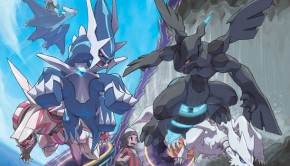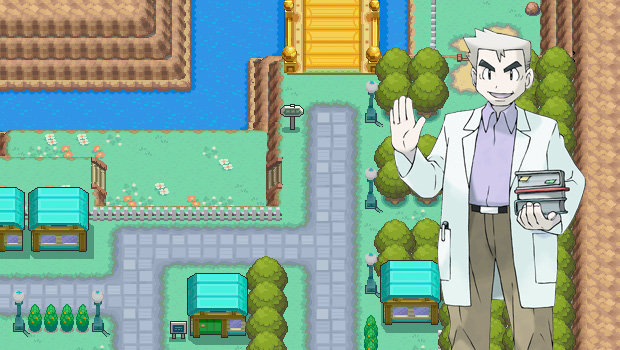252 Times Better than 252/252: Advanced EV Spreads
Congratulations! You’ve read our advice on how to build a team and come up with a perfect core and supporting cast. You’ve also been introduced to EV training and know the very best spots to train your Pokémon. Now you’re ready to start putting the finishing touches on your team, but the idea of doing all the math to come up with a competitive EV spread is too intimidating. In the end you decide to dump 252 EVs into the two most viable stats and 4 EVs in the third and make up your mind that you’re ready to battle. While this is acceptable for newcomers to VGC, as you progress as a battler you’ll soon realize how inefficient 252 / 252 spreads are. The purpose of this thread is to guide the reader in crafting custom and creative EVs spreads that make the Pokémon and the whole team more efficient. Once you have finished reading this article you’ll be able to think outside the box not only in terms of EVs, but also item choices and natures, both of which play a big role in determining how to train your Pokémon. This article will cover five important factors that should we considered when EVing your team.
Table of Contents
- Establishing a Goal which explains how to design a role for a certain Pokémonon your team and how to EV it to help accomplish that role.
- Being Conservative which involves getting the most out of your spread using the least amount of EVs to accomplish your goal.
- Offensive EVs which are used to OHKO or 2HKO the top threats in VGC or certain threats to your team.
- Defensive EVs which allow your Pokémon to survive certain attacks commonly seen in VGC.
- Speed Creeping which allows you to get the jump on other Pokémon around your Speed tier.
Establishing a Goal
Every Pokémon that you carry on your team has a specific role on the team. That role can be to OHKO/2HKO a certain threat, survive certain attacks, or outspeed a certain threat; some Pokémon are even capable of doing all three! Establishing a goal is what defines the EV spread you carry on your Pokémon and whether or not that Pokémon can accomplish that goal. So before you can begin creating an EV spread you should ask yourself, “What is this Pokémon’s role on my team? And how should I EV it to accomplish this goal 100% of the time?”
To answer the first question, you have to understand what the Pokémon you’re running is fully capable of, so it’s recommended to look at it’s movepool and base stats to see if it’s capable of fulfilling this role. For this, we recommend Veekun’s Pokédex. Once you have done that you’re halfway through establishing a goal. Now you can answer the second question several ways, either by OHKOing a certain target, surviving a certain attack from it and setting up to be able to handle it better, or outspeeding a threat to obtain an advantage over your opponent.
You have to understand that each Pokémon on your team can only do so much in a battle. Its best not to overload your Pokémon with 3-4 goals and instead focus on the two most important goals and then throw in a third if it’s possible. There is a reason you have a partner and other teammates on your party: they all have their own goals and tasks which aid the whole team in victory. It’s usually in best interest to EV each Pokémon with a seperate goal. This makes your team more versatile and unpredictable in a long run. For example, if you want a Pokémon to OHKO a certain threat, you need to make sure you invest just enough power to OHKO the threat 100% of the time, however if you plan to just have it deal as much damage as possible to a wide variety of targets, then maxing investment in offense is acceptable. The smallest number of goals you want to have is two seeing as how you have at least three stats to EV train in. Your Pokémon can either OHKO threats and Speed creep certain threats, OHKO threats and take hits, or take hits and Speed creep certain threats. The goals you want your Pokémon to accomplish are entirely up to you, but you must make sure you understand what each Pokémon in the VGC metagame is capable of doing before you prepare yourself for them.
If that seems all a bit academic, let’s take a look at an example. This is the Reuniclus I worked on with Cassie that she used on her top cutting Nationals team. We’ll take a look at what goals we selected for this Reuniclus and how we EV’d Reuniclus to accomplish those goals.
![]()
Reuniclus (F) @ Life Orb
Trait: Magic Guard
EVs: 252 HP / 60 Def / 196 SAtk
Quiet Nature (+SAtk, -Spd)
– Trick Room
– Psychic
– Energy Ball
– Recover
Reuniclus was chosen to be the Fighting-type counter to her team, and with Life Orb + 125 base Special Attack it did a fine job. 196 SpA was chosen as it was just enough to OHKO Max Hp / Max SpDef Conkeldurr and 252 Hp / 0 SpDef Hitmontop 100% of the time. It also has good chance of OHKOing 252 Hp / 252 SpDef Hitmontop. Considering that these are two of the most specially bulky Fighting-types in VGC, Reuinclus would have had no problems KOing the rest, which was very helpful for the Abomasnow on her team. The SpA EVs also allowed Energy Ball to OHKO 252 hp / 252 SpDef Calm Gastrodon without Rindo Berry and deal a significant chunk to 252 Hp Tyranitar with Sandstorm up. Reuniclus’s Hp and Def EVs allowed Reuniclus to take a non-boosted Crunch from Adamant Tyranitar and most other physical attacks. A non-boosted Bug Bite from Scizor had a 43% chance to OHKO her Reuniclus, but she had a partner in Chandelure to handle Scizor. So to reiterate, her Reuniclus’s goals were the following:
- OHKO a majority of Fighting-types in VGC
- OHKO Calm (Rindo Berry-less) Gastrodon with Energy Ball
- Take a non-boosted Crunch from Adamant Tyranitar and hit back with Energy ball
With these goals her Reuniclus was able to support her team by comfortably setting up TR majority of the time while having partners to handle threats Reuniclus would’ve had trouble against.
Conservative EVs
Being conservative is probably the most important mindset you can have when it comes to distributing EVs to your Pokémon. It simply means that you are accomplishing a goal by using the least amount of EVs needed. By using this method you’ll find yourself with more unused EVs that can be added in another stat to give your Pokémon the best possible advantage over your opponent. Most battlers’ first instinct is to dump 252 EVs into the Pokémon’s best stat, but what most of them don’t realize is that if you were to use a bit less than 252 EVs you can achieve the same results as if you maxed it out. There’s nothing completely wrong with using 252 EVs in one stat, but why should you when you can use less EVs to accomplish the same goal? The best way to figure out how many EVs you should add to accomplish a goal is to use a Damage Calculator. I recommend using the Honkalculator. Mess with the EVs and try to find how many you need to accomplish your goal and try to reduce the number as much as possible. After you’ve reduced your EVs as much as possible, you’ll have leftover EVs which can be used to increase your offense, bulk, or outpace a certain threat.
It’s important that you avoid wasting EVs on your Pokémon that could be used on another stat. Remember that a Pokémon’s stat increases by 1 point for every 4 or 8 EVs, so you should make sure you’re doing your math right. If you’re EVing in offense first make sure you have the least amount of EVs to KO the target 100% of the time, or if that’s not possible then go for a high enough chance that you feel comfortable with. If you’re Speed creeping then make sure it has enough EVs in speed to outrun the target by one Speed point. If you’re investing in more bulk make sure you invest enough HP and either Defense or Special Defense to survive the attack you’re looking out for with a reasonable percentage. The main problem with 252 / 252 spreads is that they restrict the Pokémon from accomplishing anything against skilled players as they’ll be dying to attacks they could potentially survive due to EVs being wasted in an irrelevant stat. You should definitely use the Damage Calculator to make sure that all 510 EVs are being used and split up in at least 3 different stats. If you’re in a situation where you have enough EVs in certain stats that fulfill certain goals and still have leftover stats you can add them wherever you feel it would be helpful. So if you have a Cresselia with EVs in Hp, Def, SpDef, and Spe that are satisfactory enough but still have leftover EVs you can add them to whichever of those stats you feel it’d be extra help with or add it into SpA just to give Cress a bit of fighting power. Even as little as 4 EVs in a stat can make a big difference during a battle, so take advantage of that when you’re making your spread.
You should also be aware of any irregular IVs on your Pokémon, say, for a Hidden Power, as that can affect your EVs. If you were to put 252 EVs in a stat that had a 30 IV, you would have wasted a stat point. At level fifty, when you use 252 EVs on a stat with 30 IVs, you don’t receive the extra 1 point after 248 EVs that you would if you had 31 IVs. For example, if you are running Hidden Power Fire on Latios then you should know that it usually requires 30 IVs in Special Attack and Speed. If you were using Timid Latios and investing 252 EVs into either SpA or Speed you would get the same stat as if you had invest only 248 EVs, wasting 4EVs on each stat. Because you’re trying to be conservative, you should go with 248 EVs since you get the same result and you can now put those extra 4 EVs in either of Latios’s defenses. While 4 EVs may not seem like much, any amount is more than enough in helping you barely survive certain OHKOs or getting secure kills.
Offensive EVs
You win a Pokémon battle by knocking out the opponent’s entire team before they can do the same to yours. The simplest way to do this is to overpower and KO your targets with powerful attacks, but you have to make sure you’re being smart about it as well. If you want your Pokémon to just deal as much damage to with an overpowered attack such as Latios’s Dragon Gem Draco Meteor, then 252 SpA is acceptable. However, if you’re carrying a Pokémon whose job is to KO a specific target then it’s time to be creative. As mentioned before its best to invest enough EVs in power to KO a specific target 100% of the time. Doing this requires you to learn Base Stats, how EVs change each stat, and how to use a damage calculator. You’ll want to understand the base Attack and Special Attack of your Pokémon compared to the base Defense and Special Defense of your target so you can understand how much investment you will need to KO. Not only will a large base stat determine your OHKOs, but super-effective damage is an important factor when it comes to OHKOing a target so you should definitely take that into account when EVing to KO a specific threat. Also take into account the decrease in base power of spread attacks such as Blizzard, Heat Wave, and Rock Slide, which are reduced to 75% of their original power. Due to this drop your attack might often 2HKO or 3HKO the target unless you have a way of boosting your attack or a partner who can KO one of the targets to bring the spread damage back to 100%. It’s also very important to understand that Sandstorm and Hail damage can play a huge role in deciding OHKOs. If an attack has a high chance to OHKO, it’ll become a 100% chance when you consider Sandstorm and Hail chip damage.
Items, Weather, and Abilities are a godsend when it comes to raising the power of your attacks to ensure key OHKOs. They provide your Pokémon with extra power, meaning you can invest less in your offensive stat and add some bulk to your spreads. For example, the Reuniclus that was mentioned before had only 196 SpA EVs but carried a Life Orb to guarantee the KO on Conkeldurr. This meant it had leftover EVs to add to its bulk, allowing it to take a Crunch from Tyranitar. You can go even further than this, using a Water Gem and Rain for example, to allow you to invest even less in your offensive stats and more in bulk. Of course you’re more than welcome to invest 252 EVs in offense, but if you’re stacking up multiple advantages on one mon then your attack can become unnecessary overkill when you could be investing in bulk. Ultimately the decision is up to the player’s play style so they should find an amount of offensive EVs that they feel comfortable with on their Pokémon. The player should be able understand the metagame well enough to know what kind of bulk the opposing target could potentially run and work around that. With this information, you’ll be on your way to learning how to create specific spreads made to survive and/or KO certain targets or threats.
Defensive EVs
Giving a Pokémon EVs to increase its resistance to attacks is common knowledge in not only VGC, but competitive Pokémon as a whole. Not only should your Pokémon be able to deal reasonable damage to KO your targets, but it’s equally as important for them to be able to take powerful hits themselves to remain on the battlefield to accomplish their goals. Most players usually EV a Pokémon to take a specific attack from a certain threat that hurts the rest of the team, or the Pokémon itself, which then gives it an opportunity to retaliate. If you’re planning to survive a specific attack commonly seen in VGC then you should invest not only in HP but also in either Defense or Special Defense to handle that attack. HP increases the Pokémon’s overall bulk, but investing in Defense or Special Defense allows the Pokémon to handle a physical or special attacks better, respectively. Sometimes it’s better to invest a lot of Defense or Special Defense rather than max HP to increase it’s survivability.
Just as there are tools to increase your offensive capabilities, there are tools to increase your defensive capabilities. These tools can be used to increase your survivability by regaining the Pokémon’s health or weakening certain attacks, and you should adjust your EV spreads to make the most efficient use of them. More HP on a Pokémon, for example, allows them to regain more health from Sitrus Berry, so max HP on a Sitrus Berry holder is generally a good idea. Because Sitrus restores 25% of your max HP, investing in the defenses instead of HP on a Pokémon holding Sitrus Berry is generally a poor decision as you will recover less HP from your Sitrus Berry. The resist berries and abilities such Multiscale act as great buffers to surviving attacks, making EVing your Pokémon to survive troublesome attacks much easier.
When making defensive EV spreads the player should make note of Sandstorm and Hail chip damage as well as it could end up fainting your Pokémon after you’ve survived a powerful hit. Both Sandstorm and Hail deal 6.25% or 1/16 (rounded down) your max HP of chip damage to any Pokémon that is affected by them, meaning that if your Pokémon’s total HP at level 50 was 160 it would lose 10 hp from Sandstorm or Hail. A suggestion would be to EV your Pokémon so that it survives the weather damage after taking a hit with a max damage roll. You can calculate to see how much is 1/16th of your Pokémon’s total HP and then use a damage calculator to see how much damage the attack you’re trying to survive would deal at max damage. If it leaves you with more than 1/16th of your Pokémon’s HP then you should be able to survive both the attack and the chip damage from Hail or Sandstorm.
Make sure that when you EV a Pokémon to take a hit from a specific target that it can at least harm or threaten the target back. Merely applying EVs to survive hits won’t do you any good if the Pokémon can’t do anything much in return. If your Pokémon can tank a hit while being able to KO, do significant damage in return, or set up your team then it was successful at it’s role. If it can’t then it has failed to have an impact on the match. You should also consider every possible option the target you’re trying to survive a hit from has at their disposal. For example, a very common attack most VGC players defensively EV around is Dragon Gem Draco Meteor from Timid Latios. Because Timid Latios is so prevalent, making a spread to survive it’s strongest attack will allow you to handle it majority of the time. However, in the case that Latios is running a Modest nature your EV spread will be obsolete as it will most likely OHKO and you will lose your check for Latios. These instances are rare, but should definitely be taken into account when hoping to check a certain threat. Dragon Gem Draco Meteor from Latios isn’t the only over powered threat that you should be aware of, for example Fire Gem Overheat Chandelure can utterly annihilate anything that doesn’t resist it as well. Other popular boosted attacks are Ghost Gem Shadow Ball from Chandelure and Dark Gem Crunch from Tyranitar to eliminate Trick Room setters as the majority of them are weak to Ghost and Dark moves, so be sure to watch out for them if you’re running Trick Room.
Speed Creeping
Speed Creeping refers to investing enough Speed into your Pokémon to allow it to get the first hit on another Pokémon around it’s Speed tier. This is very important as having Speed control will often determine who wins the battle. In order to properly Speed Creep you need to know trends in the metagame and be aware of how many Speed EVs a Pokémon will commonly carry. While this is useful, it is also unreliable as not every single opponent will run the same EV spreads as everyone else. Your opponent could possibly run more Speed on the threat than you imagined and now they’ll have the jump on you. One of the safest way to Speed Creep is to outspeed the target assuming they run carry max Speed EVs, but this is not always reliable as well. You can’t start assuming that everyone will run Max Speed Jolly Hitmontop so once again you just have to be smart about it and know what would be a reasonable and relevant target for you to Speed Creep. You should also make sure not to overdo your Speed Creeping. Unless it’s absolutely necessary for your team you shouldn’t try to run a ton of Speed in order to Speed Creep, especially on bulkier Pokémon, as it cuts down on the Pokémon’s bulk and makes the EV spread more difficult to finalize. As you might expect from reading this, Speed Creeping is a skill that comes with practice. The only way to really get a handle on it is to go out and play enough games to get a feel for the metagame. However, there are some starting points.
Knowing the Speed Tiers is very important when you’re trying to Speed Creep. There are certain fast threats that tend to always carry max Speed EVs which you can safely get the jump on, with the proper set up. Here’s a list of target Speed Tiers, as well as their base Speed and Speed number, that you can try to Speed Creep as they frequently carry max Speed.
101 | 168| Landorus, Thundurus-T
102 | 169| Garchomp
108 | 176| Terrakion, Virizion, Cobalion, Infernape, Galvantula,
110 | 178| Latios, Latias, Gengar, Tauros, Jumpluff, Espeon Froslass
111 | 179| Thundurus, Tornadus
115 | 183| Raikou, Azelf, Starmie, Persian, Sneasel, Ambipom, Cinccino,
120 | 189| Sceptile, Alakazam, Dugtrio
125 | 194| Weavile, Swellow
130 | 200| Crobat, Jolteon, Aerodactyl
Of course most of the Pokémon listed aren’t common enough to EV against unless you feel that you are threatened by them. The safest tier to Speed Creep to is the 130 speed tier, as you’ll be able to get the jump on almost every other Pokémon at the same time. However, because those Pokémon are so fast you’ll usually need assistance from set up moves, Choice Scarf, and abilities like Sand Rush, Swift Swim, and Chlorophyll in their respective weathers. For a more complete Speed Tier list, check out this Smogon article.
Conclusion
The purpose of making a custom EV spread is to put the odds in your favor the majority of the time. In order for you to be able to do that you’ll need to be able to understand the VGC metagame thoroughly. Make sure you pay attention to trends in threats and strategies so you can adjust yours to be able to beat whatever is common now. The majority of players make custom EV spreads to work around what’s common in the modern metagame, but don’t expect every opponent you run into to be as predictable as you may think. Everyone will make their own spreads designed to counter whatever they find threatening, so it’s best to do that too. Don’t forget that almost every custom EV spread has about three concepts to them: OHKO a specific threat, tank a hit from a specific threat, outspeed a speed tier. There’s obviously more to any EV spread, but these are the three most basic concepts. You chose the Pokémon on your team for whatever purpose they serve on your team, so you need to make sure your EV spread will help with fulfill that purpose majority of the time.
Now that you’ve read this article you’ll probably want to get out there and begin working on your own custom spreads. It’s not so easy unless you have the propers tools, which in this case would be a damage calculator. Damage Calculators are extremely important as they allow you to determine how your EV spreads will work before you can test them in battle for yourself. The previously mentioned Honkalculator is an excellent and easy to use damage calculator that you can rely on. Just remember to change the level to 50 every time as keeping it at 100 can mess up your calculations sometimes. Now that you have the info and tools to craft your own custom EV spreads, you’ll be able to improve your team’s capability in battle. Hopefully this article will inspire everyone to think outside the box instead of relying on 252 / 252 spreads!!!










